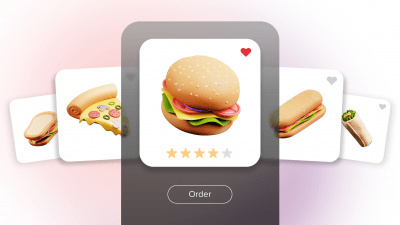Last Updated on: 3rd June 2024, 11:09 am
For companies with an online presence, retargeting is a key tool to boost sales. This is especially true in the case of ecommerce sites. While ecommerce is a diverse business sector, this advertising technique is effective whether you’re selling clothing or home & garden products. Let’s dive in and find out how you can use retargeting for your ecommerce site.
In this article you will learn:
- The differences between mobile and desktop advertising.
- Why ecommerce companies should invest in retargeting.
- The challenges and good practices for ecommerce retargeting strategies on mobile and desktop.
Table of Contents:
- Which types of ecommerce can benefit the most from retargeting
- Mobile and desktop programmatic advertising–how do they work?
- What about retargeting for ecommerce?
- Why is retargeting important for ecommerce companies?
- Retargeting strategies that drive results
- How is retargeting used in ecommerce?
- Summary
Which types of ecommerce can benefit the most from retargeting
The ecommerce sector is more than just e-shops and marketplaces. It encompasses a diverse range of businesses including travel agencies that sell online airlines, hotels, price comparison websites, and classifieds. This begs the question: which ecommerce sector can most effectively leverage retargeting?
Our experience has shown that the retail sector, especially the fashion and electronic industries, find it easiest to benefit from retargeting. Despite this, all types of ecommerce can effectively leverage retargeting to grow their revenue and build customer loyalty. In fact, our team has performed many successful retargeting campaigns across various industries.
See also: The 5 Must-Have Features of Retargeting Ads for a Fashion Brand
Mobile ecommerce is on the rise!
We spend 57% of our online time on our smartphones, which means that bile ecommerce is experiencing significant growth, and retargeting is proving effective for businesses targeting both websites and mobile apps.
Just how important are mobile sales? Well in 2023 70% of all customers used their mobiles to search ecommerce sites. This also translates to sales, according to this SaleCycle report, more than half of all ecommerce purchases are completed via mobile devices (57% in Europe), with just 43% generated by desktop sales. At the same time, ecommerce businesses everywhere struggle with a high shopping cart abandonment rate of over 80%. This is a big opportunity for companies to leverage retargeting as a means to address this challenge by re-engaging users and bringing them back to their websites or mobile apps.
So, how do ecommerce sites reach new users? With programmatic advertising.
Mobile and desktop programmatic advertising–how do they work?
The world of advertising has changed a lot through the years. Today, we find ourselves in the era of programmatic advertising—an approach that relies on real-time bidding (RTB) to streamline the buying and selling of ad space across web and mobile platforms. This approach improved the efficiency of advertising campaigns while optimizing marketing expenditures. By leveraging the power of technology, programmatic advertising enables businesses to precisely target their audiences, deliver relevant content, and engage with potential customers.
While it created many opportunities, programmatic advertising also came with its own challenges. The business is fast-paced, and relies on rapid decisions made based on large quantities of data. Humans found it difficult to keep up, so we developed novel solutions that are better at handling this kind of information than we are. One such solution is Deep Learning.
Deep Learning is an advanced form of machine learning. It is capable of processing data through layers, with increasingly complicated analysis passing through each layer. Additionally, it is able to improve its output overtime, without direct input from its programmers. At RTB house we use Deep Learning to determine what kind of content to show potential customers, where to show, and at what moment it will have the greatest impact.
Tools like this make it easier to effectively use retargeting for your ecommerce site, and give you an edge over competitors using less sophisticated tools.
What about retargeting for ecommerce?
Retargeting is an advertising technique that enables companies to reach users who have already visited their website or app (regardless of whether they bought anything or not). Ecommerce sites can use it to bring users back to their sites by displaying products or promotions that a specific customer might be interested in.
At RTB House, we maximize retargeting’s potential with Deep Learning. It enables us to better understand users’ needs and expectations. This is especially useful for creating personalized ads. This personalization is based on a specific user’s behavior and predicted purchasing intentions. We retarget customers with the most engaging content that motivates them to come back to your website or mobile app and buy your products. RTB House, we are among the DSP leader in preparations to perform retargeting in a cookieless world.
A simplified retargeting process looks something like this:
- A user visits your ecommerce website or mobile app and engages with your content (browses products sites, adds products to their shopping cart, etc.).
- Based on their activity, we show them personalized ads of your company on other websites or mobile applications.
- The user sees the ecommerce retargeting ads for the product they are interested in, comes back to your website and makes a purchase.
Good to know: Retargeting and why it should be in the digital toolbox of every home improvement organization
Why is retargeting important for ecommerce companies?
Personalized retargeting works best for larger companies with well-established websites/mobile apps. This is simply because such enterprises have access to a large enough pool of users, and therefore data, to perform the necessary analysis and optimize campaigns. Large online shops with a variety of product types allow advertisers to leverage a wide range of retargeting campaigns and strategies. Here are some ecommerce retargeting use cases:
- Bringing the user back to the page of the product he viewed previously.
- Cross-selling.
- Up-selling.
- Introducing new products or product lines.
- Promoting special discounts and limited-time offers.
The essential benefits of applying personalized retargeting in the ecommerce industry are:
- Increased conversion rate–users are more likely to buy when you present them with an offer that is meant specifically for them.
- Reduced costs of customer acquisition–reaching new customers that have never visited your website is more time and money-consuming than reaching users who have already expressed interest in your products.
- Reduced ad fatigue–your users are retargeted with content adjusted to their needs and interests, so they don’t become irritated with your advertising efforts,
- Converting one-time buyers into loyal customers–you can display ecommerce retargeting ads with special offers to those who once bought something, to show them that they are important to you and that it is worth buying from your company on a regular basis.
Retargeting strategies that drive results
In ecommerce, mastering retargeting strategies is like having a handy toolbox at your fingertips. It helps you win back potential sales and build strong customer connections. Let’s explore these tactics to help your ecommerce business thrive in a competitive digital world.
- Dynamic product retargeting: This strategy involves displaying personalized ads showcasing the exact products or services that a user viewed on your website. By reminding them of what caught their eye, you increase the chances of a conversion.
- Abandoned cart retargeting: Addressing cart abandonment is crucial in ecommerce. Send reminders or incentives to customers who added items to their cart but didn’t complete the purchase. Use Deep Learning to highlight the products best suited to potential customers’ needs to encourage them to come back.
- Segmentation and personalization: Divide your retargeting audience into segments based on their behavior, such as product interests, purchase history, or browsing duration. Tailor your ad content to each segment to make it more relevant and compelling.
- Post-purchase retargeting: Your relationship with a customer doesn’t end after a purchase. Use post-purchase retargeting to upsell or cross-sell complementary products.
- Optimize your dedicated product pages: Develop dedicated product pages that not only reinforce your retargeting campaigns’ message but also ensure a seamless transition for users, improving overall user experience.
- Frequency capping: Bombarding users with excessive ecommerce retargeting ads can be counterproductive. Implement frequency capping to limit the number of times a user sees your ads to prevent ad fatigue.
- Testing: Continuously optimize your retargeting campaigns by experimenting with different ad creatives, messaging, and targeting options. While A/B testing is an option, we highly recommend entrusting this process to our Deep Learning capabilities to help identify what resonates most with your audience.
How is retargeting used in ecommerce?
Retargeting allows you to play with cards that you already hold more efficiently, which enables you to increase your ROI. Let’s assume you already have high traffic on your website or many users download your app, but you don’t see results in the number of transactions. With a proper strategy, you can convert your visitors – users who never purchase nor put any product into the shopping cart, but often browse your website. An interesting special offer can encourage them to actually make a first purchase. This advertising technique could be also applied in the case of a high cart abandonment rate to bring customers back to your website and motivate them to buy.
Nice seasonal discounts or personalized offers promoted with retargeting can make your active users buy more, which positively affects the overall cart value. Such an application of retargeting can not only increase the number of sales in specific periods, but also help build a strong sense of loyalty among your active customers.
You have to focus on both web and mobile retargeting. Taking the current trends in the retail and mobile ecommerce market into consideration, as leveraging only web retargeting seems unreasonable. Apart from that, it’s worth remembering that there is a trade-off to be made between the quality and quantity of users. The more conversions you want to get from retargeting, the more expensive it will get.
Read also: 5 Benefits of Mobile Retargeting
Summary
Here are some things you should remember from this article:
- All types of ecommerce businesses should consider retargeting, although some companies are more likely to achieve better results than others
- Retargeting allows companies to bring the users that already visited their websites/mobile apps back to them
- Personalized ecommerce retargeting is possible for both mobile apps and websites
- Retargeting can help you to fulfill various goals (e.g., upsell, cross-sell, promoting new product launch)
Contact us and we will help you to plan your ecommerce retargeting strategy.





